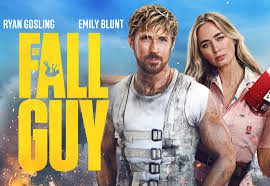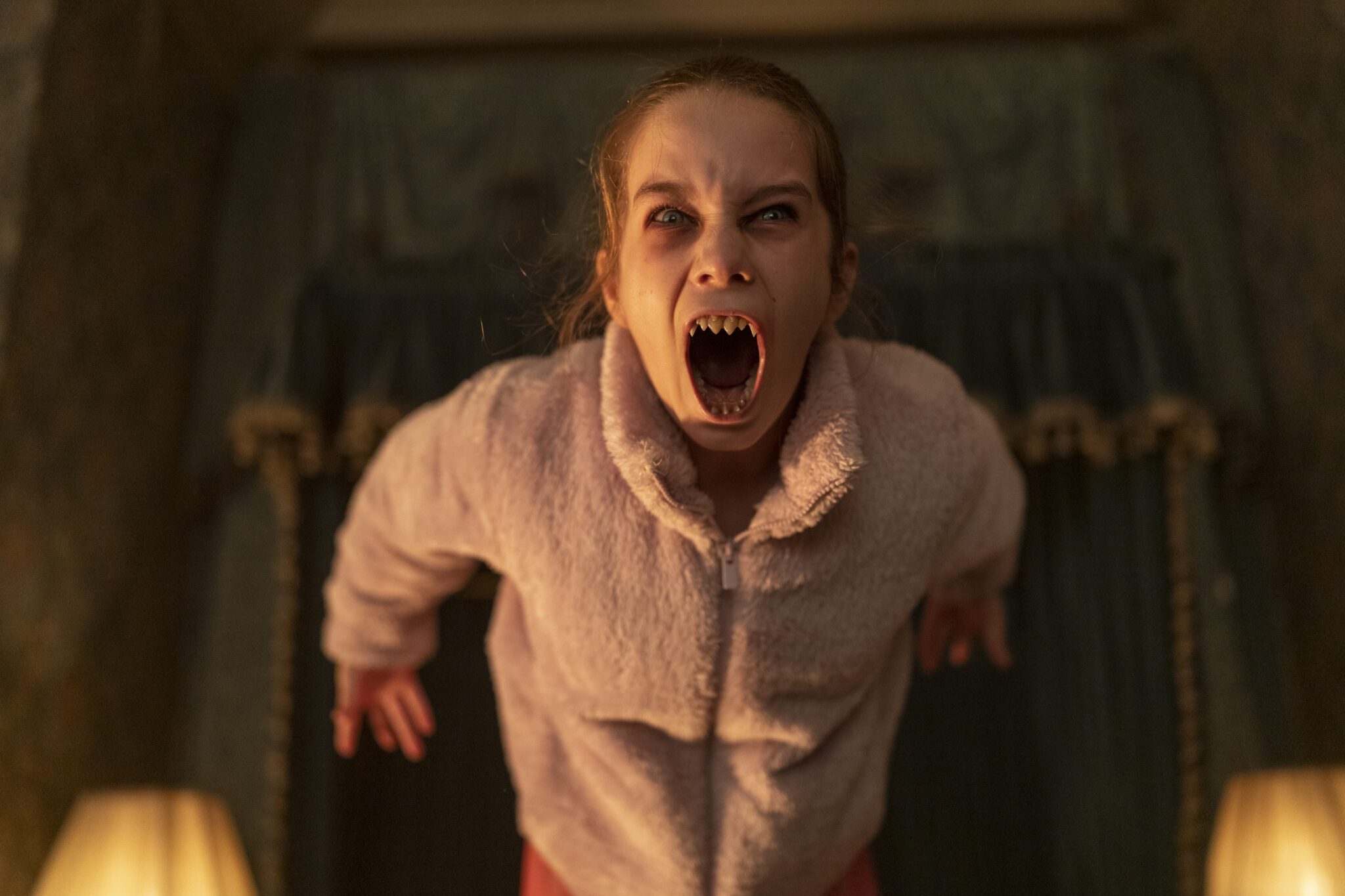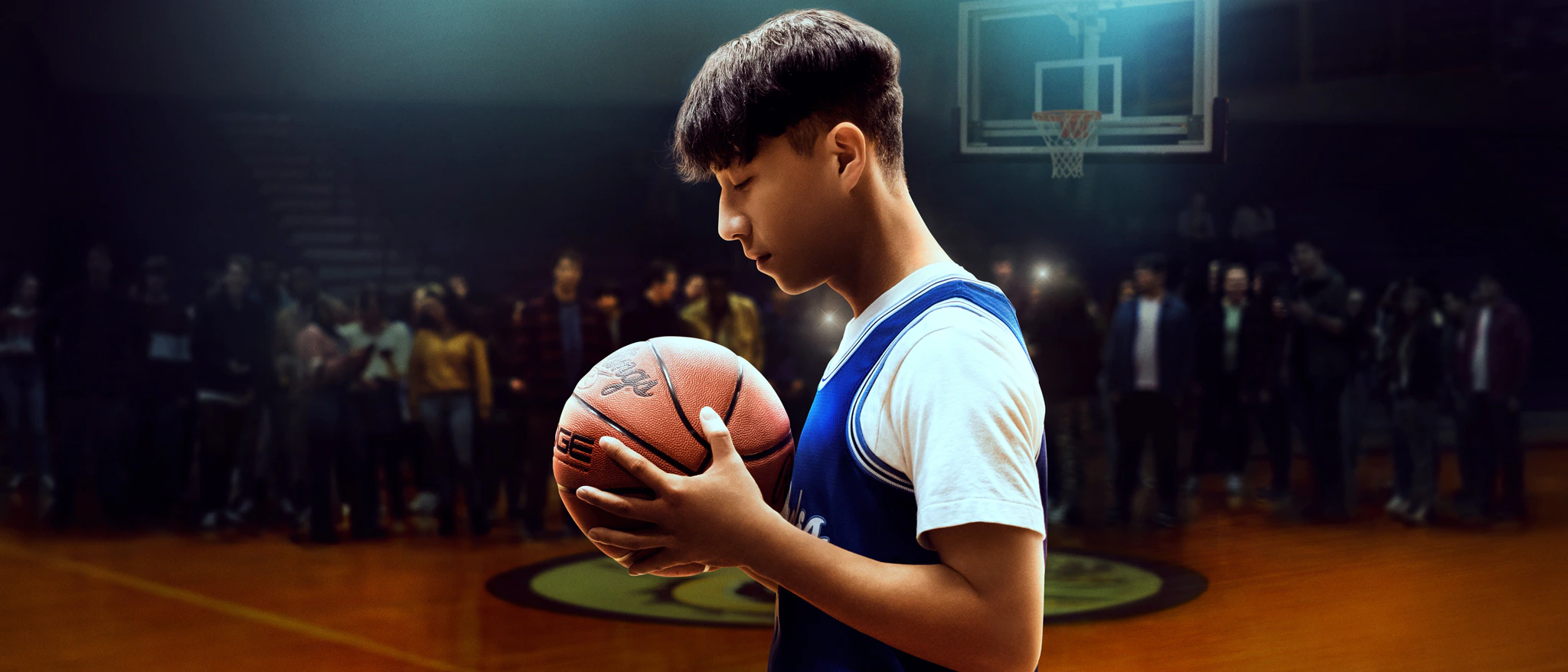
As far as I’m aware, I believe that Chang Can Dunk marks the first studio-produced, teen movie to have an Asian-American male as its protagonist. (If anyone knows one that came before this, please let me know.) Regardless, the representation in this film alone made it a must watch and a film that I needed to review.
After all, this character’s literally me.
The film comes from debut filmmaker Jingyi Shao, whose journey found him working as a production assistant on Chinese sets and eventually led him to directing opportunities in commercials, music videos and now, a Disney+ original. The film landed second on the Hollywood Blacklist in 2020, which paved the way for Shao’s script to hit the screen. (In case you’re unaware, the Blacklist is an annual collection of the most revered industry screenplays that have yet to be green lit.)
Bernard Chang (Bloom Li), who goes by ‘Chang’, is a sixteen-year-old high schooler determined to create a new identity in his sophomore year. Equipped with prescription contacts, a new haircut and outfits to match his confidence, Chang walks into his school ready to conquer new ground. Unfortunately, his mission gets held up by Matt (Chase Liefeld), the star member of the basketball team who constantly gets in his way. Matt’s interference first shows up on the first day of school as Matt butts into Chang’s conversation with the new star of the marching band, Kristy (Zoe Renee). As their rivalry heats up, Matt punishes Chang during basketball tryouts, making his every attempt to one up Matt look sad. Chang’s frustration with Matt prompts him to make a bet that he’ll be able to dunk by the end of the football season and he puts his three thousand dollar Charizard card on the line. This sense of jeopardy leads Chang on a journey of tireless work to reach the rim. To hit that height, Chang finds a former pro basketball player, DeAndre (Dexter Darden). DeAndre vlogs Chang’s journey towards dunking for his YouTube channel, aided by Chang’s filmmaking friend, Bo (Ben Wang). These videos make his daily grind to dunking bigger than he could have ever anticipated. Chang’s need to dunk and make a name for himself sends him on a journey of self-discovery where he must make the person that he wants to be match the person that he is.
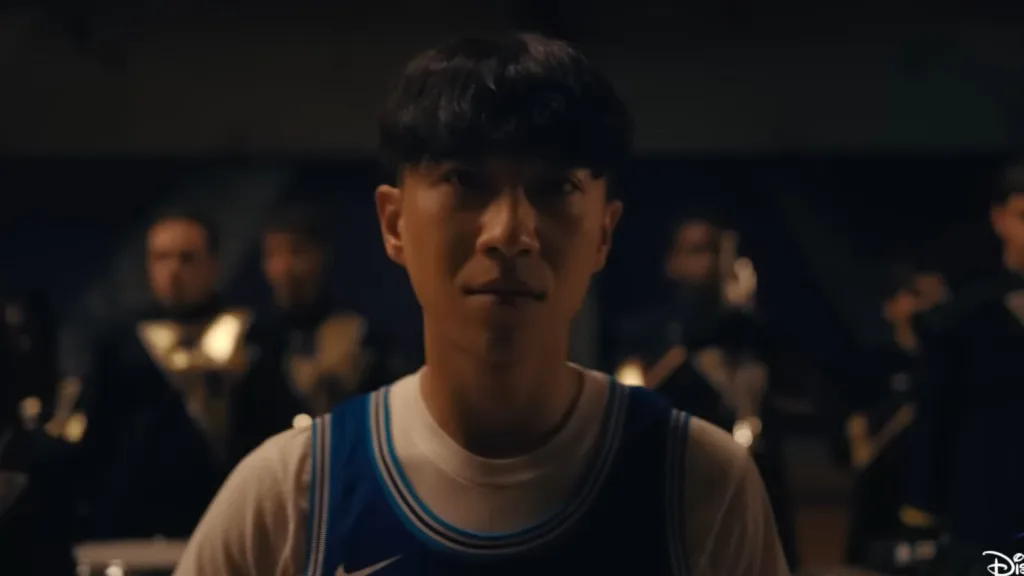
Writer-Director Jingyi Shao wrote this film from a mixture of childhood memories and his experience as a child of American immigrants. Shao used the idea of Chang dunking as a goal that anyone who ever wanted to achieve something could relate to. The story revels in Chang’s journey of growth, and that doesn’t just come from the Rocky-style montages of his workouts that prepare him to dunk. The film was written and produced during COVID, a time that saw a spike in Asian hate. This prompted Shao to make the tone of the film more hopeful and grounded. Chang’s goal acts as a jumping off pad for a universal underdog story that allowed Shao to reveal his voice and perspective as an Asian American.
The story started out much more indie, a fact that doesn’t surprise me considering its spot on the Blacklist and its subsequent production through Disney. Shao describes that early version of the film as the Asian American Rebel Without a Cause, perhaps reminiscent of Justin Lin’s indie debut Better Luck Tomorrow. There’s certainly a rebellious energy that can be seen throughout the film but, in the end, it’s a celebration of overcoming the obstacles of life. Shao’s proud of being able to show his relationship with his parents in a way that’s true to his experience. He had them switch from Mandarin to English depending on how mad they were at each other and portrays the gap between generations of Asian immigrants really well through the refusal of both parent and child to speak the same language.
Chang Can Dunk is another familiar teen sports story that features many tropes and story beats that have been staples of these Hollywood genres. This makes the whole movie unsurprising and harder to engage with on a deeper level. Still, there’s an undeniable power in this formula and it’s executed very well. The emotional beats are all clearly layed out, keeping the film emotionally engaging. It’s held back by its screenplay, which I’m sure had to go under a fair bit of changes when running through Disney. The film’s ability to appeal to broader audiences is a welcoming prospect but it certainly prevents the story from exploring new emotional territory.
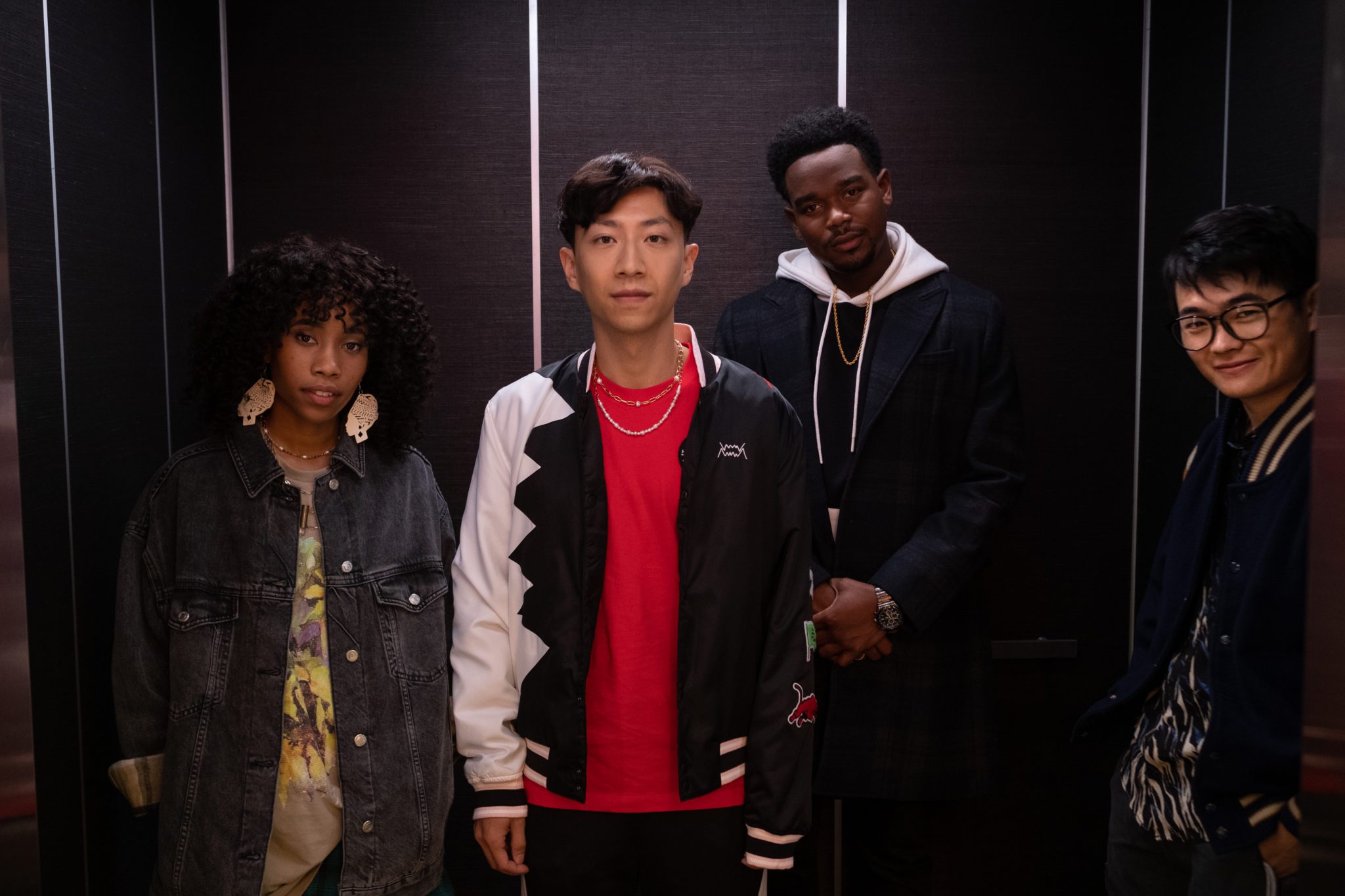
One of the fundamental truths about high school is that it’s weird and full of imperfect and messy moments. (Check out Ethan Eng’s Therapy Dogs for the most raw version of this) While Chang isn’t lacking conflict, it fails to engage in the mature aspects of high school. It holds back the raw emotion that teenagers go through and that’s what drives the best teen dramas. Some of the most important emotional scenes feel too true to the script rather than the characters, a symptom of both Shao’s reliance on his own text and the need to fit a cleaner Hollywood production. Its just very hard for directors in their 30s or older to capture the voice of an ever-changing Generation Z. This attempt to capture the modern teen dialogue not only creates some cringe-worthy scenes as he tries to create a lighter tone but also makes the emotions of these characters a lot more stilted. Movie dialogue often calls for very articulate speech but that’s something you rarely see in teenaged, emotional outbursts. This makes the whole of the characters experience feel like a Disney fantasy. The film mostly plays to this well with its underdog sports-film structure and never truly tries to be anything else. It is a disappointment to see a story like this take away from the chance to truly explore young people, especially a young Asian American man. I hope we see a breakout narrative film explore a dramatic version of this story that embraces realism.
The characters themselves aren’t afforded much depth and this film felt conflicted about who it cared for the most. Instead, the whole film keeps a much more omniscient perspective that creates well-shot scenes but also takes away from personal connection to the characters. Most great films run off of the relationship between two people or a person’s relationship with the world around them. This film doesn’t commit to either and, as a result, half-bakes both. The film does feature touching scenes between Chang and his mom that act as the heart of this story, but it’s not tied enough to the goal of the story. Chen herself says she doesn’t understand the point of Chang dunking and the film doesn’t expand much on how she comes to understand his goal as an extension of his adolescent struggles.
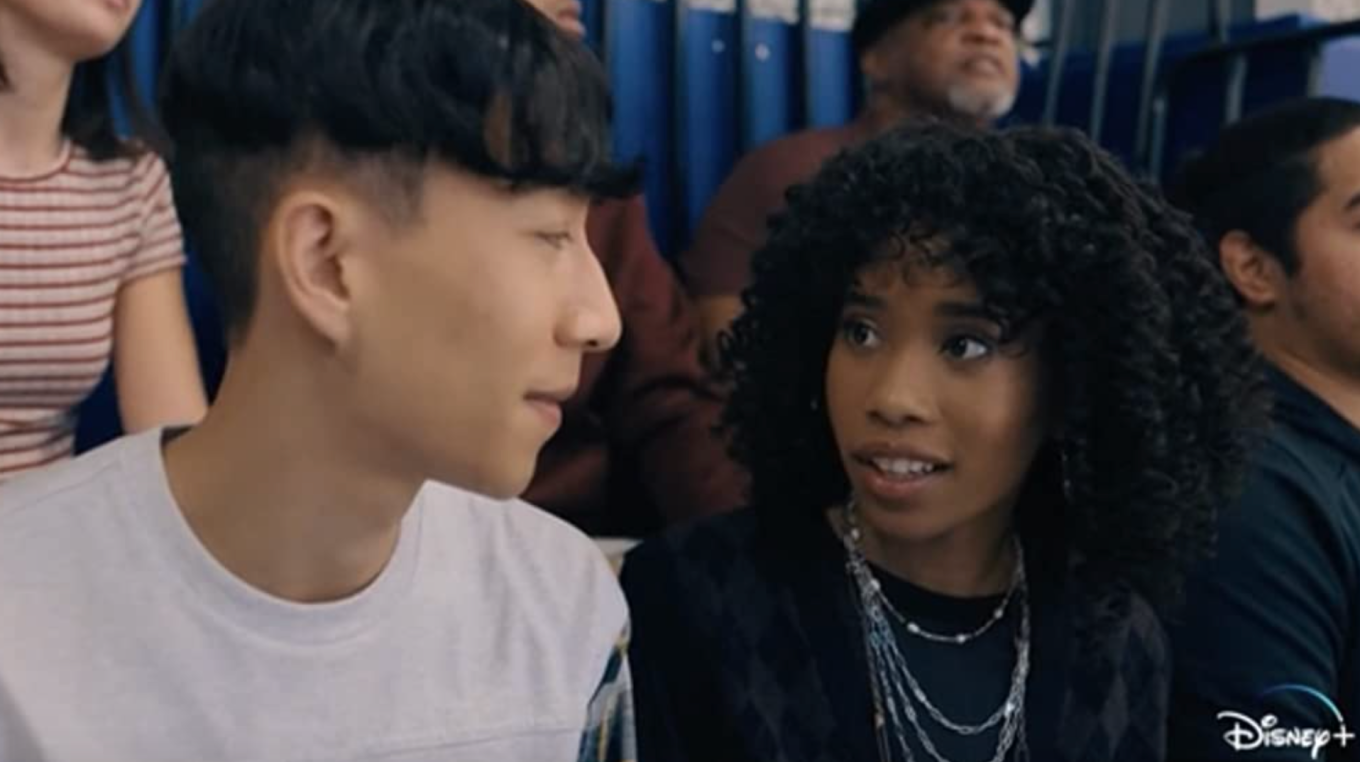
The romantic sub-plot felt a little unneeded in a film that struggles to pass the Bechdel test and Kristy remains mostly passive and inconsequential to the film’s story. The film also allows what I’ve dubbed the Scott Pilgrim problem to seep through as Kristy, from our perspective, already clearly shows interest in Chang. There’s no journey for Chang to discover if she likes him or for us to discover if she does. We instantly know she does and it seems almost baffling that Chang doesn’t. The two also show an apparent lack of chemistry and, while they both give good performances in their own right, casting them together felt like a misfire.
Even with all my criticisms, this film still taps into a perspective that is both clearly Hollywood and the perspective of an Asian American. Living in North America often shapes our stories to become more like those of our fellow Americans, an idea I’m glad to see reflected. I’ve seen some complain that this is a lazy shortcut to representation and that simply repeating Hollywood formats that have long been dominated by white Hollywood isn’t true diversity. I personally think films like this are integral to what should be a varied and diverse spectrum of Asian-American films. Shao made sure his perspective shined through and the scenes with Chang and his mom express that openly. The way that he engages with the struggles of an insecure Asian teen are easy to connect to. Chang is able to engage with both the most heroic and shameful parts of being an Asian American teenager. He is fueled by the need to prove himself to others and makes great progress but he struggles with insecurity regardless.
It’s a feeling someone like Daniel Kwan, who literally won an Oscar this year, deals with. Even by being declared the year’s best director, he said he felt his imposter syndrome was at an all-time high. That’s a feeling that can stay with us no matter where we are in life and I hope Chang builds up the confidence in any young Asian-teen to be confident in their own skin. We don’t have lie about who we are.
Chang Can Dunk is now available on Disney+.


